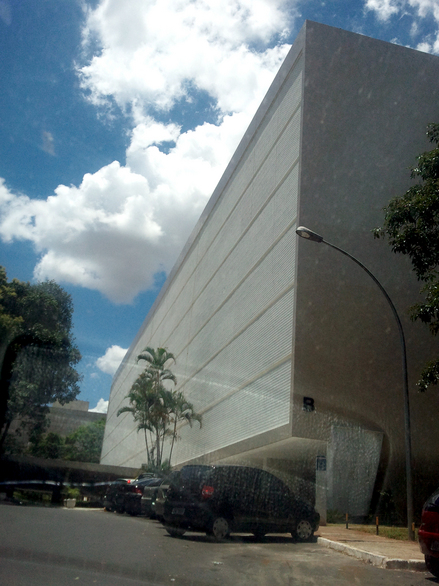TROPOLISM
Tropolism Books: Lucio Costa: Brasilia's Superquadra
Author: Fares El-Dahdah
Publication Date: February 2005
Publisher: Prestel Publishing
ISBN:
978-3791331577
Speaking of Brasilia, one of the amazing books to come across my desk this year was the not-new-but-still-excellent Lucio Costa: Brasilia's Superquadra. The book is part of The Harvard Design School's also-excellent CASE series. Composed of ten essays about Lucio Costa's design for Brasilia, and how the resulting city has evolved since the majority of it was built. The essays, starting with an excellent interview with Costa himself, focuses on the specific, unique character of Brasilia. Costa sums it up well:
In a normal city, urbanism's objective is to create conditions that allow a city to sprout like a plant, unlike Brasilia, which is a product of reason imposed by an act of will that occurred with the expressed objective of transferring the country's captial. The intention was to create a city that had a pleasant way of life, yet remained truly administrative with its own characteristics well defined, meaningful.
By focusing on the Superquadra, Costa's brilliantly devised solution to residential living in Brasilia, the reader enters into the life of the city, and the uniqueness of its organization. The Superquadra are composed of housing blocks, and at its edges are commercial strips and public buildings. The aggregation of these building blocks works, and works well, creating a modern city that is unlike any other. Having just visited said Superquadra, I was struck by how well this book captures the very special nature of these neighborhood units. The housing blocks, suspended above the ground, leave the ground floor almost entirely open. The result is wonderful: one is truly moving through a park full of residential buildings. Some of the newer blocks compromise this aspect but overall the city is as intended. The essays do a good job of delineating this evolution, and the laws supporting them.
As a case study in how an entirely new urban idea evolved and played out, this book is valuable. Everything from the shape of the buildings to the politics underlying them, to the way laws shape buildings is captured here. Because Brasilia is so young, and is an entirely designed city, it is a good subject for this kind of case study: micro adjustments in code alter the buildings that go up immediately after. For those interested in diving into some good urban design reading, as well as those who love Brazil and Brasilia, or those who study city design, this book is a must.
Advertisement
Support our advertisers because they help keep the content free.
If you're interested in advertising, contact us.

